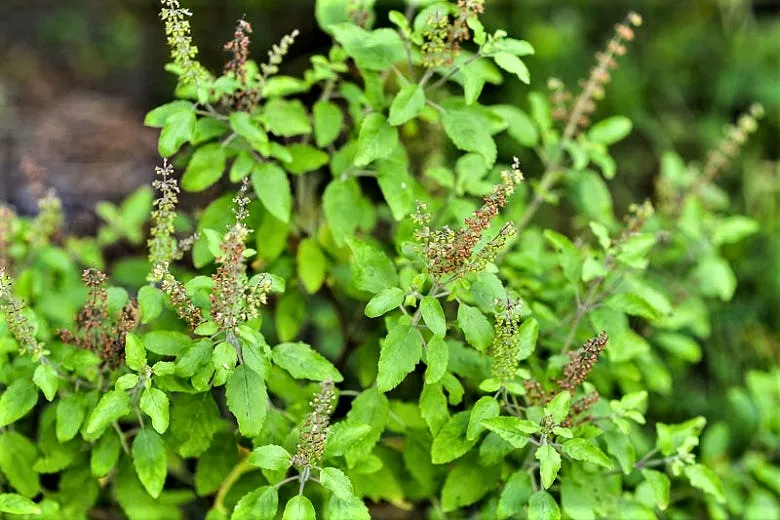The tulsi plant, also known as Holy Basil (Ocimum sanctum or Ocimum tenuiflorum), is a revered herb in Hinduism and is often referred to as the “queen of herbs” for its numerous health benefits. It has been used for centuries in traditional Ayurvedic medicine for its healing properties. Here are some of the potential health benefits and growing tips for the mighty tulsi plant:
Tulsi Plant Health Benefits:
- Adaptogenic Properties:
- Tulsi is considered an adaptogen, helping the body adapt to stress and promoting overall well-being.
- Antioxidant Rich:
- The plant is rich in antioxidants, which help protect the body from free radicals and reduce oxidative stress.
- Anti-inflammatory Effects:
- Tulsi contains anti-inflammatory compounds that may help reduce inflammation in the body.
- Immune System Support:
- It has immunomodulatory properties, which means it can help modulate and strengthen the immune system.
- Respiratory Health:
- Tulsi is known for its respiratory benefits, and it is often used to alleviate symptoms of coughs, colds, and other respiratory issues.
- Digestive Aid:
- The herb may help in digestion and alleviate digestive issues.
- Stress Reduction:
- Tulsi is believed to have calming effects on the nervous system, helping to reduce stress and anxiety.
Tulsi plant Growing Tips:
- Climate:
- Tulsi thrives in a warm and tropical climate. It prefers full sunlight but can tolerate partial shade.
- Soil:
- Well-draining soil with a slightly acidic to neutral pH is ideal. Good drainage is crucial to prevent waterlogging.
- Watering:
- Tulsi plants prefer regular watering, but the soil should not be waterlogged. Allow the soil to dry out between watering.
- Planting:
- You can grow tulsi from seeds or cuttings. Plant seeds about 1/4 inch deep in the soil. If using cuttings, allow them to root in water before transplanting.
- Spacing:
- Space the plants about 12 to 18 inches apart to ensure proper air circulation.
- Fertilization:
- Tulsi is not a heavy feeder, but you can use a balanced fertilizer during the growing season to promote healthy growth.
- Pruning:
- Regular pruning encourages bushier growth and prevents the plant from becoming too leggy. Pinch off the tips to encourage branching.
- Pests and Diseases:
- Tulsi is relatively resistant to pests and diseases. However, keep an eye out for aphids and spider mites. Neem oil can be used as a natural insecticide.
- Harvesting:
- Harvest leaves regularly once the plant reaches a sufficient size. Use sharp scissors to cut the leaves, and avoid removing more than one-third of the plant at a time.
- Overwintering:
- In colder climates, tulsi is grown as an annual or can be overwintered indoors. It is sensitive to frost.
Read More: 10 Edible Flowers You Can Grow in Your Garden
Remember, while tulsi is generally safe, it’s advisable to consult with a healthcare professional before using it for medicinal purposes, especially if you are pregnant, nursing, or taking medications.



